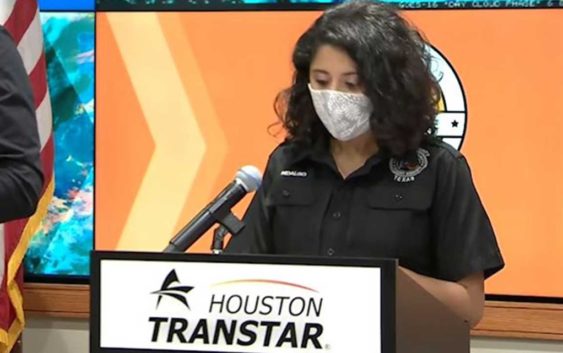- Charlotte-based marketing agency announces $20,000 Creative Campaign Grant to help communities after Hurricane Helene
- Artists transform hurricane aftermath into hoop-inspired masterpieces at Charlotte exhibit
- NC's cost for Hurricane Helene damage is nearly $60 billion, state says
- State to develop drone program to better respond to disasters like Helene, Florence
- South Carolina residents face deadline to get storm debris out to the curb after Hurricane Helene
Harris County issues voluntary evacuation of coastal areas ahead of Hurricane Laura

HOUSTON — With Hurricane Laura’s overnight shift to the west overnight, Harris County Judge Lina Hidalgo today issued a voluntary evacuation for Zones A and B of the county. Those are the coastal counties.
Zones A and B include portions of Seabrook, Baytown, Taylor Lake Village, Shoreabcoes La Porte, Nassau Bay, Friendwood, City of South Houston, portions of Kemah and Clear Lake. Deer Park, El Lago and Morgan’s Point.
“We could get three to five feet of storm surge or we could get more than that,” said Judge Hidalgo.
For those not in the portions of Zones A and B, you’re asked to stay home and be prepared to shelter-in-place.
“All of us need to be prepared for the very real potential of a direct hit from the storm,” she said.
In preparation for damage from Hurricane Laura, Judge Hidalgo says the county has asked for 75 trucks of water and ice.
And as people in Galveston County and Harris County try to get out of harm’s way, Houston Mayor Sylvester Turner is asking people to stay off the roads. He said by 8 p.m. Wednesday, the roads in Houston should be clear.
At this point, contraflow lanes won’t be activated. Tolls on Harris County have been suspended to help with the evacuation.
What is storm surge and why is it so dangerous?
Storm surge is often the greatest danger to coastal residents and their homes during a hurricane, according to the National Hurricane Center.
But what exactly Is a storm surge, and what makes it so dangerous?
The National Hurricane Center describes storm surge as an abnormal rise of water generated by a storm, over and above the predicted astronomical tides. This is different than storm tide which is the rise in water level due to the combination of storm surge and the astronomical tide.